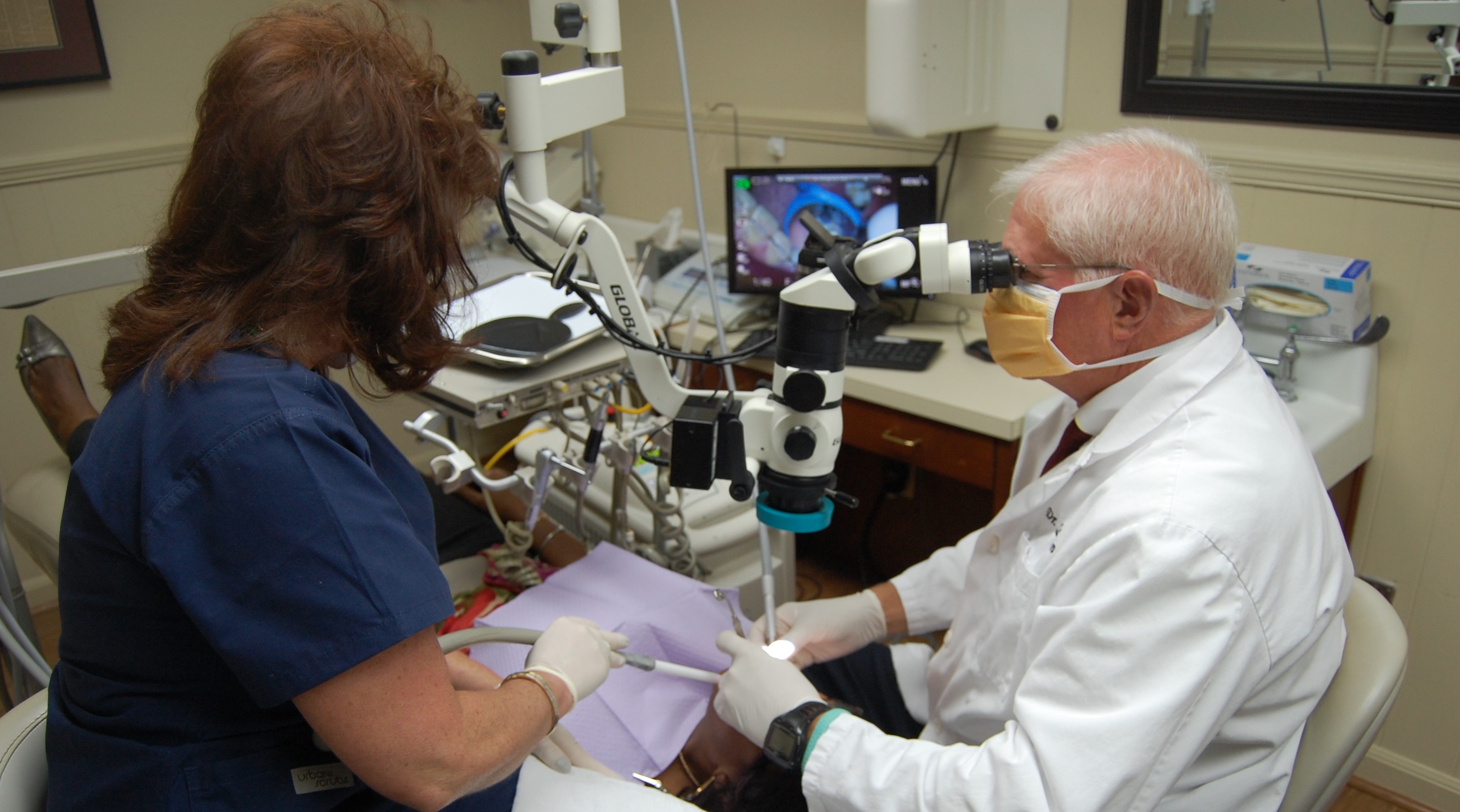NIDCR renews support for practice-based research to improve clinical care
NIDCR is continuing its support for the National Dental Practice-Based Research Network (PBRN), now entering its third cycle of funding. The network, established in 2005, fosters investigative partnerships between academic clinical scientists and practicing clinicians to address questions of everyday relevance to dental practitioners. Studies are conducted in dental offices with consenting patients, and the network translates evidence-based findings into improved clinical practice. This cycle of the National Dental PBRN will build on the momentum of the previous 14 years of NIDCR investment.
“One of the big challenges to advancing oral health is that it can take more than a decade for well-researched, evidence-based treatments to make it from the lab into private dental practice,” says NIDCR Director Martha J. Somerman, DDS, PhD. “By conducting research in the real-world setting of a dental practice, the National Dental PBRN aims to get advances in care to dental patients sooner.”
The network’s central infrastructure includes the National Administrative and Resource Center, which provides resources such as practitioner recruitment and engagement, research-conduct training, and management of the network’s single Institutional Review Board, and the National Coordinating Center, which is the central locus for data coordination, collection, management, and storage. Together the centers coordinate research overseen by six regional Nodes capable of reaching interested practitioners in every US state. In the new funding cycle, the network will broaden its scope by adding two new Nodes that will operate across the entire network. A specialty dentistry Node will recruit and engage practitioners within dental specialties, and a unique patient population Node will link practitioners with similar practice types or who treat patients with specific conditions that affect oral health. Total funding for the National Dental PBRN centers is $37 million through 2026.
“As the National Dental PBRN enters its third cycle, we encourage continued collaboration between clinicians and researchers, and we welcome new partners from academia, the dental community, small businesses, and patient advocacy organizations,” says Dena Fischer, DDS, MSD, MS, director of NIDCR’s Clinical and Practice-Based Research Program.
Applications for funding of clinical trials and large clinical observational studies to be conducted in the National Dental PBRN are due on December 5, 2019, or February 10, 2020.
Since the network’s start, membership has reached 7,000 participants and includes dentists, dental hygienists, other office staff, dental students, and oral health researchers. Over the same period, approximately 60,000 patients from all over the US have participated in 58 clinical research studies. Completed studies have provided evidence that has informed better decision-making by dental practitioners, and the results of studies may set new research directions.
For example, one study found that nearly half (47%) of 805 dentists surveyed had never accessed their state’s prescription drug monitoring program (PDMP). Registration and use of these programs are recommended by the American Dental Association to promote proper use of controlled substances for pain management and to deter their misuse, abuse, and diversion. The most common reason cited for practitioners' non-access was lack of awareness and lack of knowledge about PDMPs. The researchers concluded that outreach and education could help inform dentists and encourage them to use these programs.
Another team of researchers tested the feasibility of having dental practitioners screen for high-risk types of oral HPV, a virus that can cause oropharyngeal cancer. The researchers found that most of the 1,030 patient participants were comfortable answering questions on a tablet device about cigarette use, sexual behavior, and other lifestyle factors linked to increased risk for oral HPV. Patients whose answers suggested high risk provided oral rinse samples for HPV testing and potential follow-up.
About 90% of the practitioners were comfortable with the screening procedures. The researchers concluded that oral HPV screening in dental settings is feasible and a first step in determining whether screening for oral HPV should be done on a routine basis.
Other completed studies have addressed management of painful temporomandibular disorders, dentists’ use of software to help patients quit tobacco, and the prescribing of antibiotics prior to dental work for patients at risk for endocarditis, an infectious heart condition.
If you would like to propose a research study to be conducted in the National Dental PBRN, please visit the grant applicants’ page. If you are a dental practitioner who would like to learn more about membership in the network, including being a partner in research, please visit the practitioners’ page. For more information about NIDCR’s support of dental practice-based research, contact the NIDCR Program Director for dental practice-based research.
The National Administrative and Resource Center is based at the University of Alabama, Birmingham, and the National Coordinating Center is based at the Kaiser Permanente Center for Health Research in Portland, Oregon. The network’s regional research Nodes are located at the University of Rochester, New York; University of Florida, Gainesville; Health Partners, Minneapolis; University of Alabama, Birmingham; University of Texas Health Science Center, San Antonio; and Kaiser Permanente, Portland, Oregon. The specialty dentistry Node is at the University of Illinois, Chicago. A base for the unique patient population Node has not yet been chosen.
Related Links
References
Prescription Drug Monitoring Program Use: National Dental PBRN Results. McCauley JL, Gilbert GH, Cochran DL, Gordan VV, Leite RS, Fillingim RB, Brady KT; National Dental PBRN Collaborative Group. JDR Clin Trans Res. 2019 Apr;4(2):178-186. doi: 10.1177/2380084418808517. Epub 2018 Oct 29.
Feasibility and acceptance of oral human papillomavirus detection in the dental office: Results from The National Dental Practice-Based Research Network. Rindal DB, Gilbert GH, Carcelén C, Funkhouser E, Durand E, Uppgaard DA, Fellows J, Ikeda J, Kerr AR, Brar B, Gordan VV, Agarwal S, Barnett P, Pickard RK, Gillison M; National Dental Practice-Based Research Network. J Am Dent Assoc. 2019 Feb;150(2):130-139.e4. doi: 10.1016/j.adaj.2018.10.022.
Attention Editors:
Reprint this article in your own publication or post to your website. NIDCR News articles are not copyrighted. Please acknowledge NIH’s National Institute of Dental and Craniofacial Research as the source.


